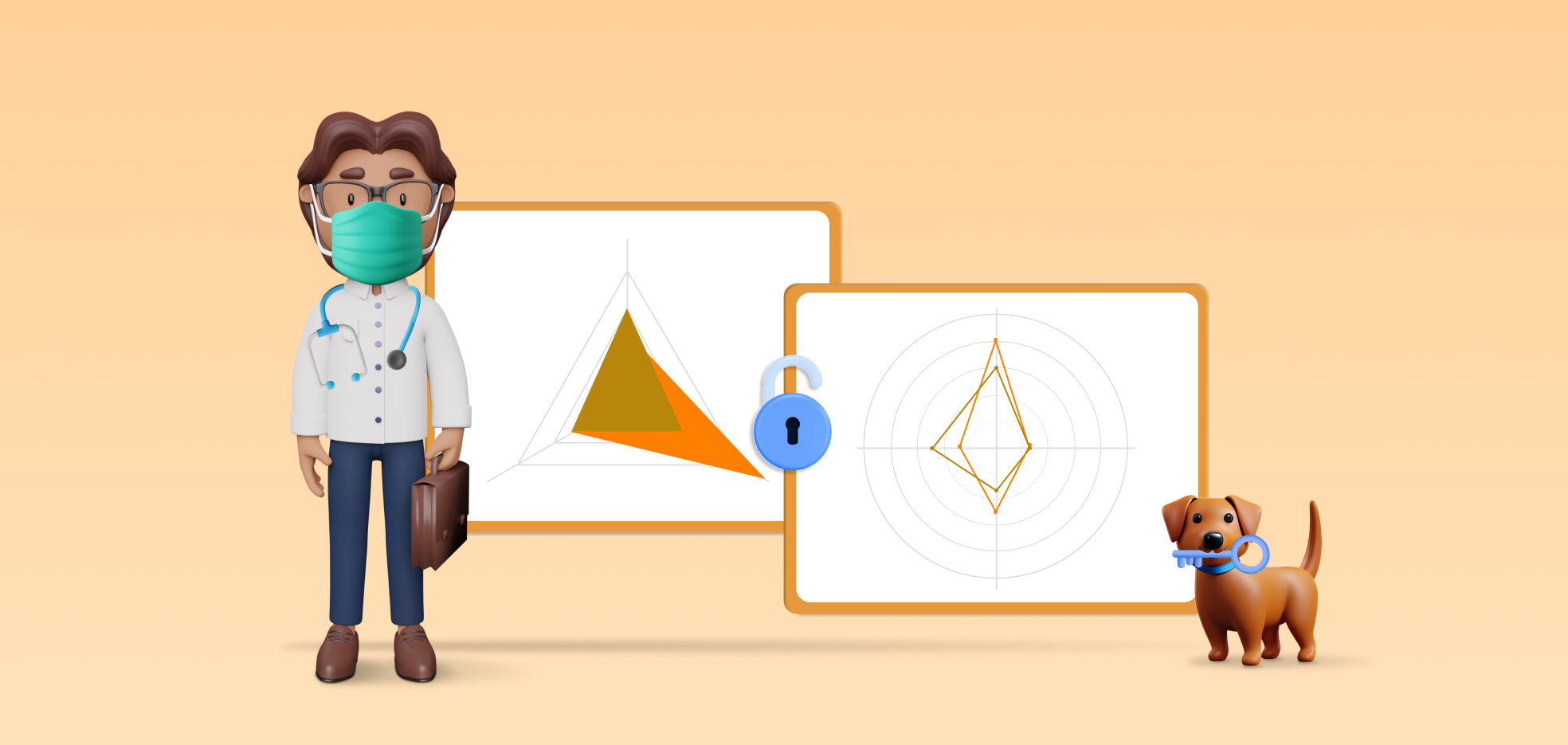Unlocking Clinical Insights with Radar and Polar Charts in Reporting
 Bold Reports Team
Bold Reports Team
Understanding clinical performance and outcomes is crucial to delivering quality patient care. However, analyzing vast amounts of data and identifying actionable clinical can be challenging. This is where data visualization, particularly radar and polar charts, plays a pivotal role. In this blog, we’ll explore how radar and polar charts can enhance clinical performance and outcome analysis by providing valuable insights across various healthcare domains.

Healthcare Data Visualizations
Challenges of clinical performance and outcome analysis
While healthcare organizations strive to understand how well they treat patients, analyzing clinical performance and outcomes presents significant challenges. These challenges include managing vast amounts of data, interpreting the meaning of different metrics, and extracting practical insights that can guide improvements in patient care.
The role of data visualization
Data visualization is a crucial tool in healthcare analytics. It transforms complex data into actionable insights through visual representations. This enables healthcare professionals to identify patterns, trends, and outliers more effectively, leading to informed decision-making and better patient outcomes.
Understanding radar and polar charts
Radar and polar charts are graphical representations that display multivariate data in a two-dimensional format. They consist of a central point and multiple axes radiating from it, each representing a different variable. Radar charts are particularly useful for comparing the performance of multiple entities across various metrics simultaneously.
Examples of radar and polar chart applications in Healthcare
Enhancing pain management effectiveness
Improving pain management depends on the effectiveness of pain relief treatments, which can be easily evaluated using radar charts. Enhancing pain management not only improves patient comfort and satisfaction with treatment, but also increases adherence to treatment plans due to their increased efficacy, resulting in better outcomes.

Pain Management Effectiveness Radar Chart
Improving departmental throughput efficiency
Healthcare facilities can utilize radar charts to assess the efficiency of different departments by analyzing patient wait times, lengths of stay, and resource utilization. Identifying areas of inefficiency enables facilities to make improvements that reduce wait times and increase patient satisfaction.

Consulting vs. Waiting Time by Healthcare Department Radar Chart
Analyzing admissions by gender and urgency type
Radar charts help healthcare providers understand admission patterns by gender and urgency, allowing them to allocate staff and resources effectively. By analyzing this data in polar charts, hospitals can adjust staff levels to meet the needs of each patient, ensuring optimal care delivery and improved outcomes.

Admissions by Gender and Urgency Polar Chart
Balancing inpatients and outpatients by departments
By comparing the numbers of inpatients and outpatients across departments in a radar chart, healthcare organizations can optimize resource allocation and patient flow. This ensures timely and appropriate care for both inpatients and outpatients, enhancing operational efficiency and patient satisfaction.

Inpatients and Outpatients by Department Radar Chart
Minimizing implant failure and complication rates
Radar and polar charts can track implant failure and complication rates by comparing relevant clinical indicators such as infection rates, revision surgeries, and patient-reported outcomes. This allows healthcare providers to identify risk factors, monitor outcomes, and implement preventive measures to minimize adverse events.

Implant Failure vs. Pain Management Score by Complication Type Polar Chart
Conclusion
Radar and polar charts are powerful tools for healthcare organizations to gain clinical insights by enhancing their analyses of treatment performance and patient outcomes. These charts help healthcare administrators see complex information in an easily comprehensible way to improve patient care.
If you have any questions about how Bold Reports-powered visualizations, please post them in the comment section below. We welcome you to start a free trial and experience Bold Reports for yourself. Be sure to let us know what you think!
Subscribe to my newsletter
Read articles from Bold Reports Team directly inside your inbox. Subscribe to the newsletter, and don't miss out.
Written by
